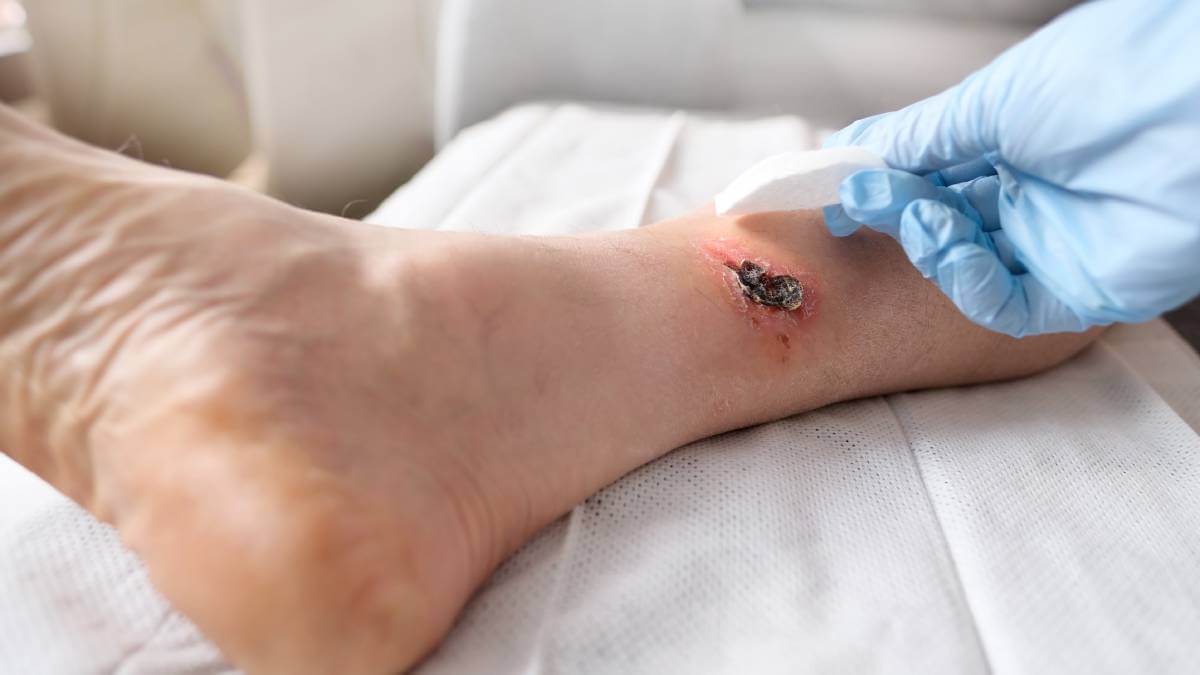An ulcer that can create severely disfiguring marks on the skin is spreading across parts of Australia. The exotically named Buruli ulcer is a bacterial infection of the skin and soft tissue. In serious cases it can even attack the bone. Outbreaks have been observed on the Victorian coast and the suburbs of Melbourne, and in Australia’s far north, in both Queensland and the Northern Territory.
Though the ulcer usually shows up as a painless lump at first, it can ‘eat away’ at the skin, burrowing down to create what look like potholes in a road. Recent research suggests mosquitos and possums are the main culprits when it comes to transmission.
The Buruli ulcer – how?
In most cases, the ulcer will present itself as a mosquito bite – and that’s most likely what bit actually is. But if Buruli is present, what begins as a small lump takes a dangerous turn. The spot will grow bigger over days or weeks, and may then form a crusty scab.
Crusty scabs, while ugly, are usually a sign of healing but in the case of Buruli, it is non-healing. In the next stage the scab will disintegrate into an ulcer, which will then itself enlarge.
As ugly as it can be, the Buruli ulcer has one ‘redeeming’ feature – in most cases it is painless. On top of that, there is no associated fever with Buruli.
The Buruli ulcer – where?
The ‘Where?’ side of the Buruli ulcer equation is an interesting one when it comes to Australia. Like most mosquito-borne infections, it is found in mainly tropical areas around the world. It has been observed in 33 countries, including West Africa, Central Africa, New Guinea, Latin America and tropical Asian regions.
In Australia, however, it appears to have originated in very much non-tropical Victoria. First detected in the east of the state, it was bestowed with a name of a Gippsland city of Bairnsdale.
From there, the ‘Bairnsdale virus’ made its way west along the Victorian coast, and it came to prominence along the Mornington Peninsula. Holiday towns Rye, Sorrento, Blairgowrie and Tootgarook were identified as high risk.
More recently it has been found on the other side of Port Philip Bay on the Bellarine Peninsula. This takes in Victoria’s second largest city of Geelong, although the city itself and its suburbs have been deemed low-risk.
Even Melbourne’s suburbs have not escaped Buruli. Cases have been in found in the inner suburbs of Essendon, Moonee Ponds, Brunswick West, Pascoe Vale South and Strathmore.
Outside of Victoria, Australia’s top end has not escaped the Buruli ulcer. Cases have been found in the Northern Territory and far north Queensland. Mossman, 20km north-east of Port Douglas, has been identified as a hot spot.
Prevention and treatment
Avoiding a mosquito bite is your best prevention bet. Flyscreens, protective clothing and insect repellents containing diethyltoluamide (DEET) or picaridin are recommended. On top of that, try not to allow pools of stagnant water (e.g. buckets, pots) to form. These are prime breeding environments for ‘mozzies’.
When it comes to treatment, sooner is certainly far better. Most Buruli ulcers require treatment with a 6-8 week course of specific oral antibiotics. Surgery, used in combination with antibiotic therapy, can also be required in some cases.
Treatment for the Buruli ulcer is usually undertaken by infectious diseases specialists with experience managing this condition.
Untreated ulcers tend to get bigger with time, so keep an eye on any mosquito bite you get this summer. If the bite starts taking a turn for the worse, seek prompt treatment.
Were you aware of the Buruli ulcer? Do you know someone who has been infected? Let us know via the comments section below.
Also read: Stomach ulcer warning signs
Health disclaimer: This article contains general information about health issues and is not advice. For health advice, consult your medical practitioner.

